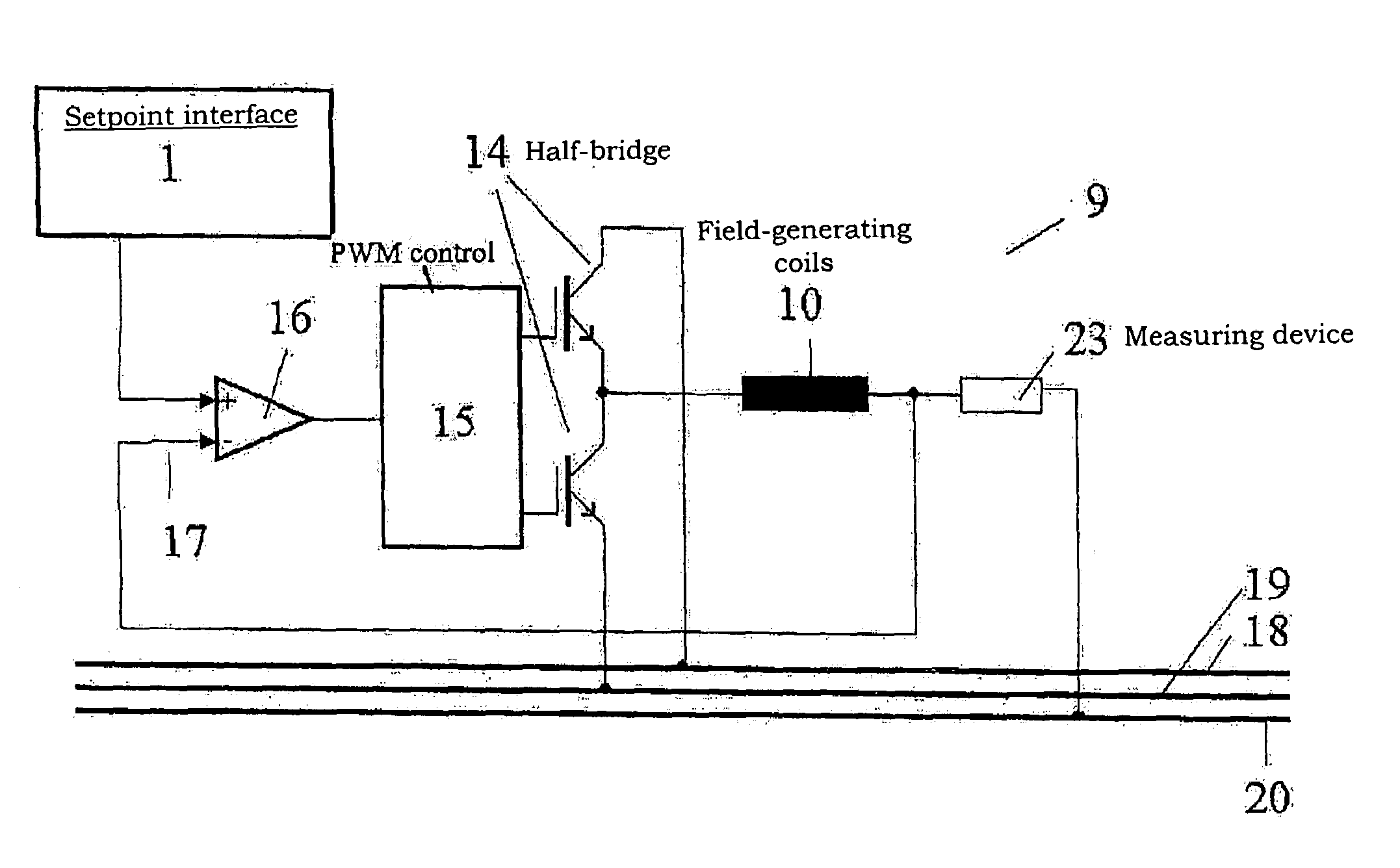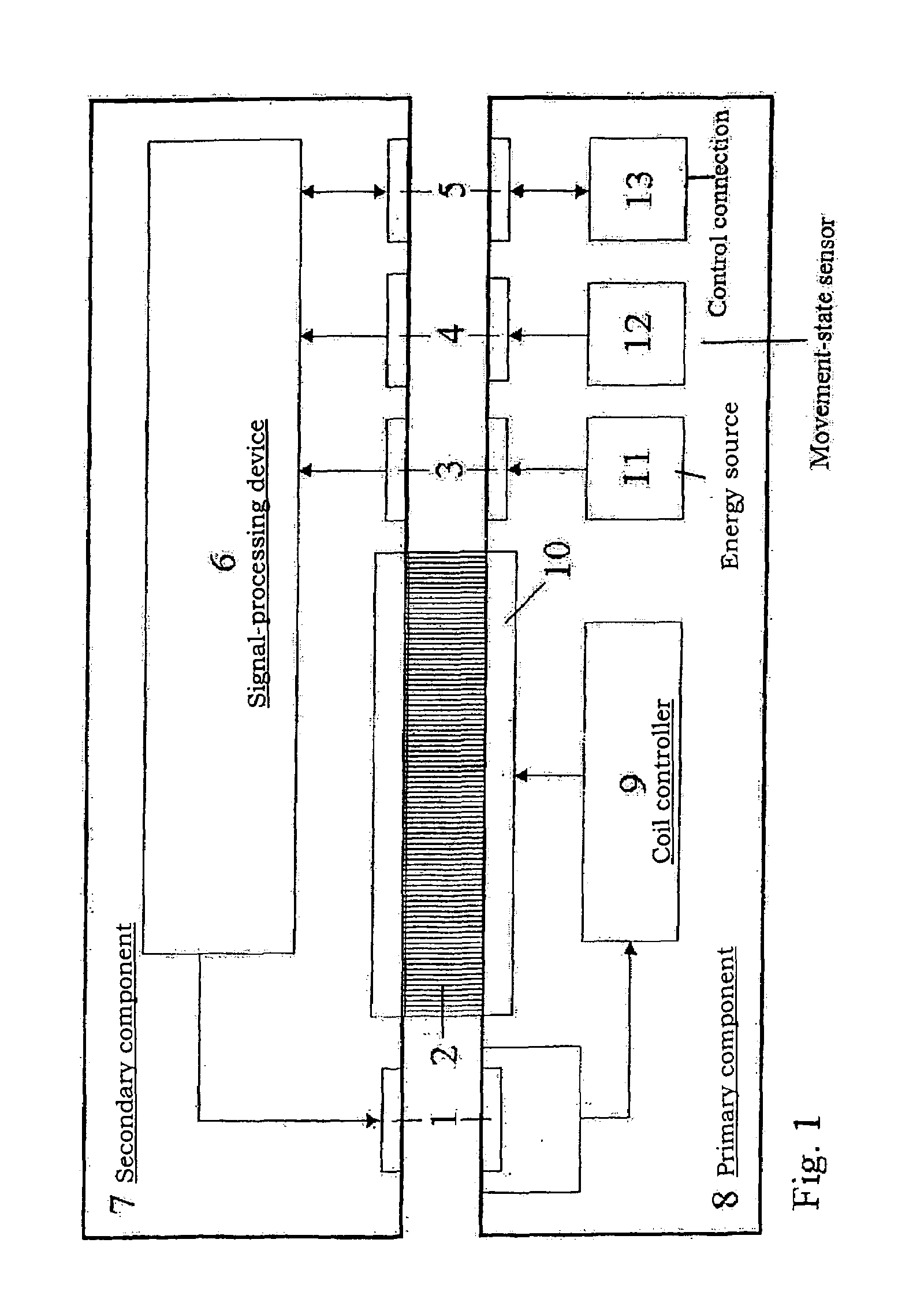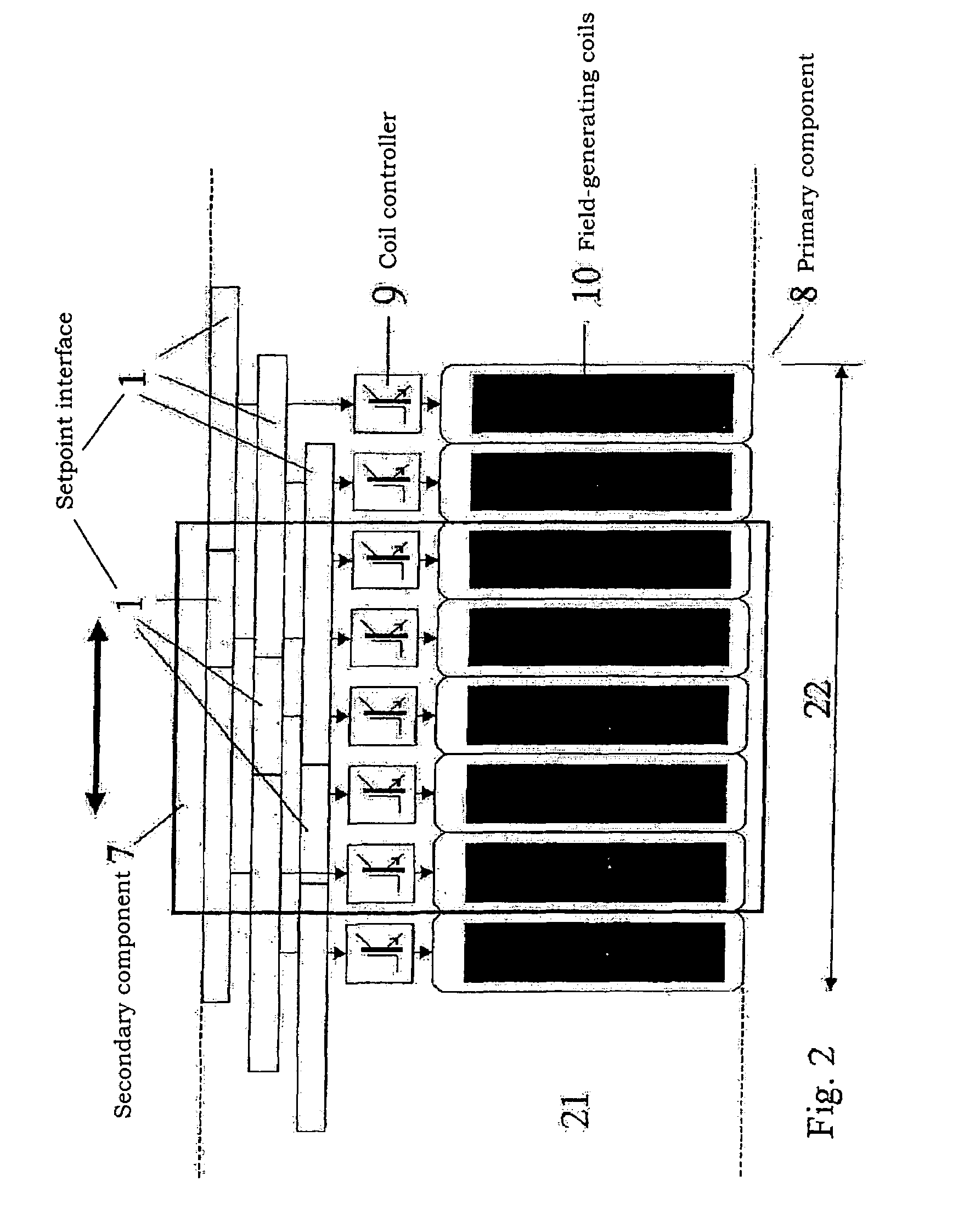Linear motor having progressive movement control
a technology of linear motors and control elements, applied in the direction of automatic controllers, dynamo-electric machines, instruments, etc., can solve the problems of increasing complexity of the mechanical system for sensing the position, increasing the difficulty of expanding an existing path, and requiring considerable time and technical effort to modify the system configuration. , to achieve the effect of excellent positioning accuracy and high rigidity
- Summary
- Abstract
- Description
- Claims
- Application Information
AI Technical Summary
Benefits of technology
Problems solved by technology
Method used
Image
Examples
Embodiment Construction
[0062]The linear motor illustrated in FIG. 1 includes a secondary component 7 and a primary component 8. The illustration is merely an example. For clarity, it illustrates only a single secondary component 7 in a sectional view. Primary component 8 forms a route, e.g., traveled by a plurality of secondary components 8 simultaneously.
[0063]Control connection 13 may ensure the connection to a controller, which is set up in a centralized or decentralized manner and implements the coordination of the movement process or of an entire industrial process. Control information is transmitted to corresponding and oppositely situated control interface 5 of the secondary component in a non-contacting fashion via control interface 5 on the primary component, which may be implemented as inductive, bidirectional interface in the specific example. Control interface 5 of the secondary component is connected to a signal-processing device 6, which analyzes the data received from the controller and in ...
PUM
 Login to View More
Login to View More Abstract
Description
Claims
Application Information
 Login to View More
Login to View More - R&D
- Intellectual Property
- Life Sciences
- Materials
- Tech Scout
- Unparalleled Data Quality
- Higher Quality Content
- 60% Fewer Hallucinations
Browse by: Latest US Patents, China's latest patents, Technical Efficacy Thesaurus, Application Domain, Technology Topic, Popular Technical Reports.
© 2025 PatSnap. All rights reserved.Legal|Privacy policy|Modern Slavery Act Transparency Statement|Sitemap|About US| Contact US: help@patsnap.com



